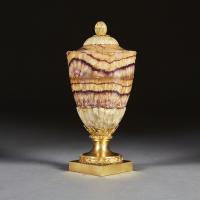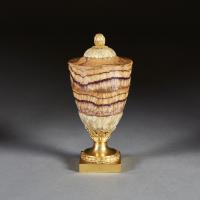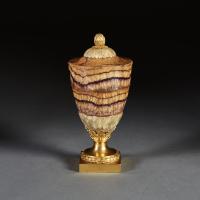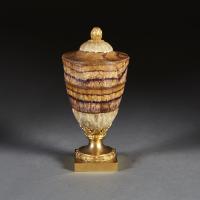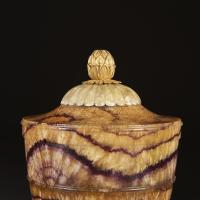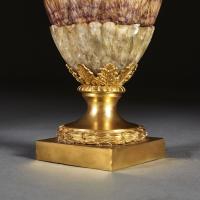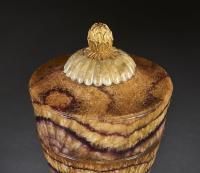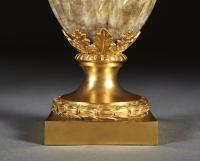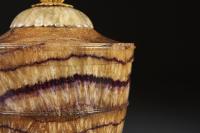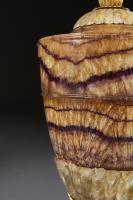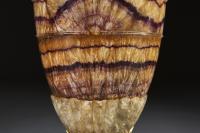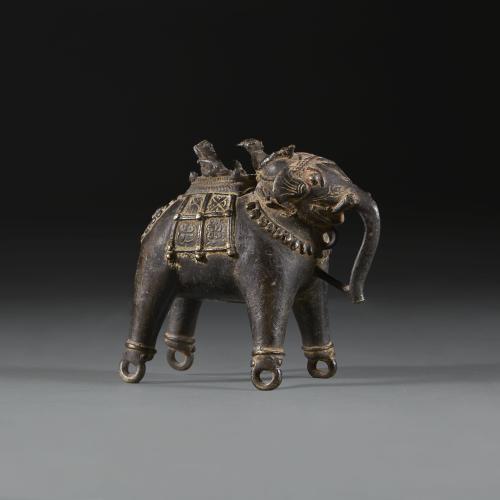
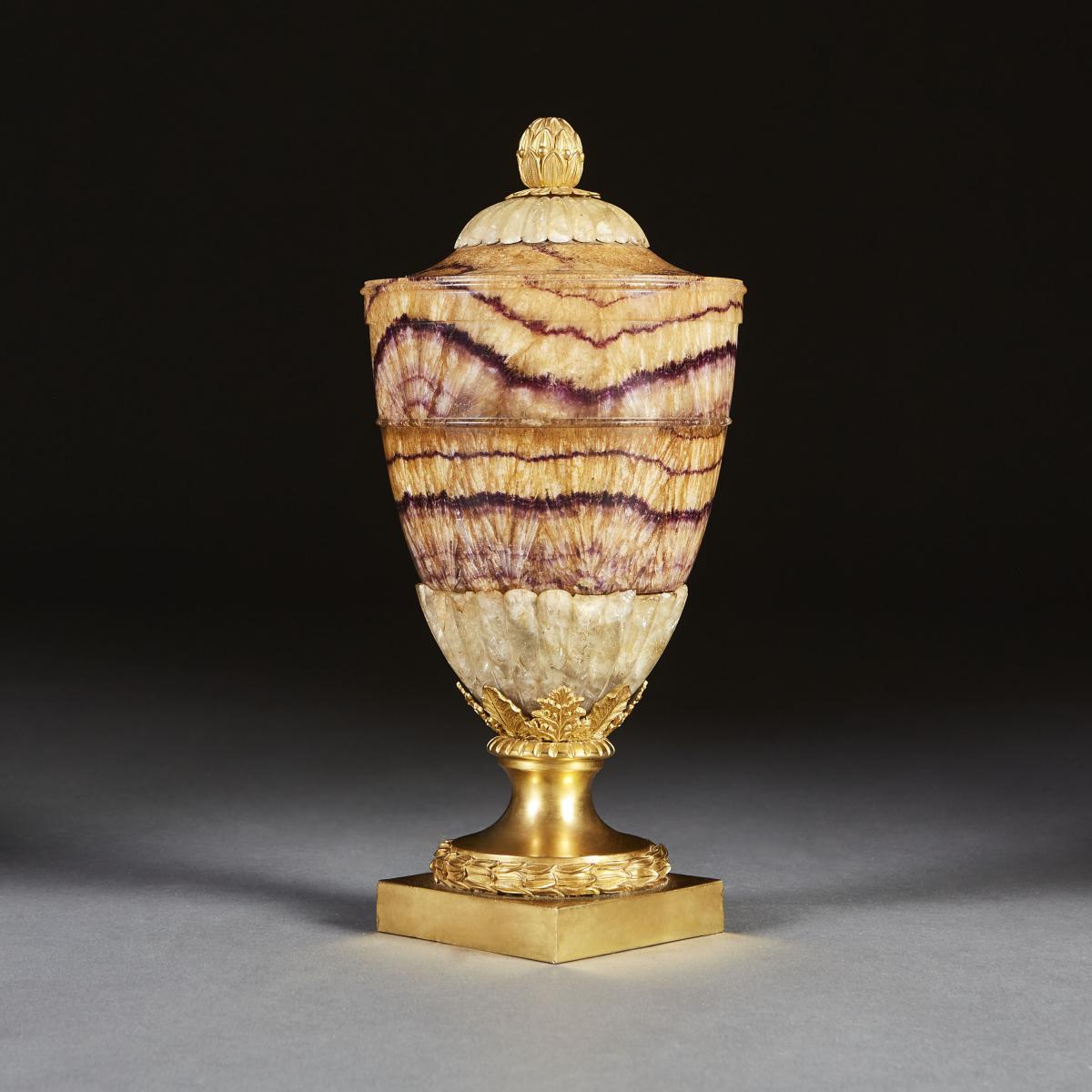
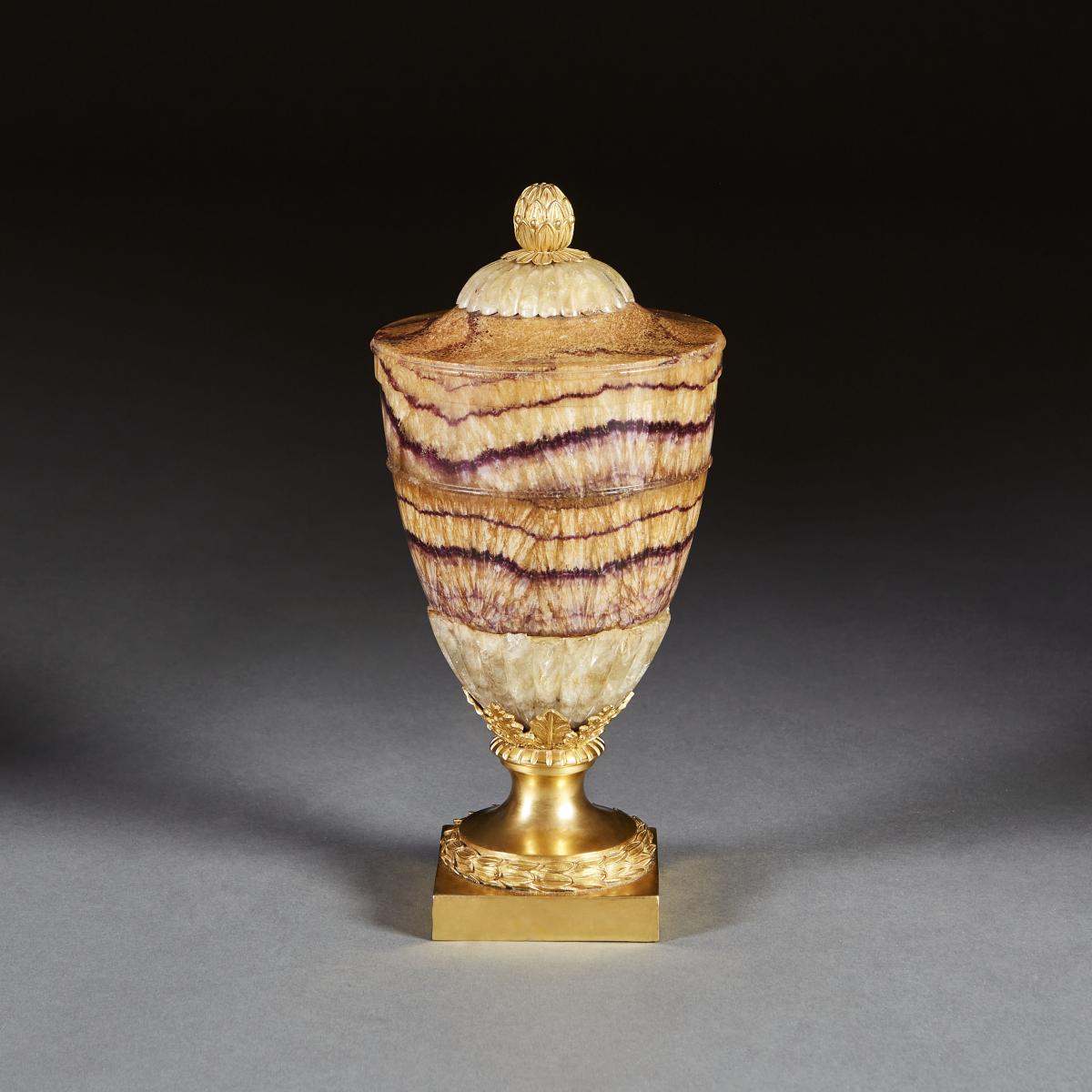
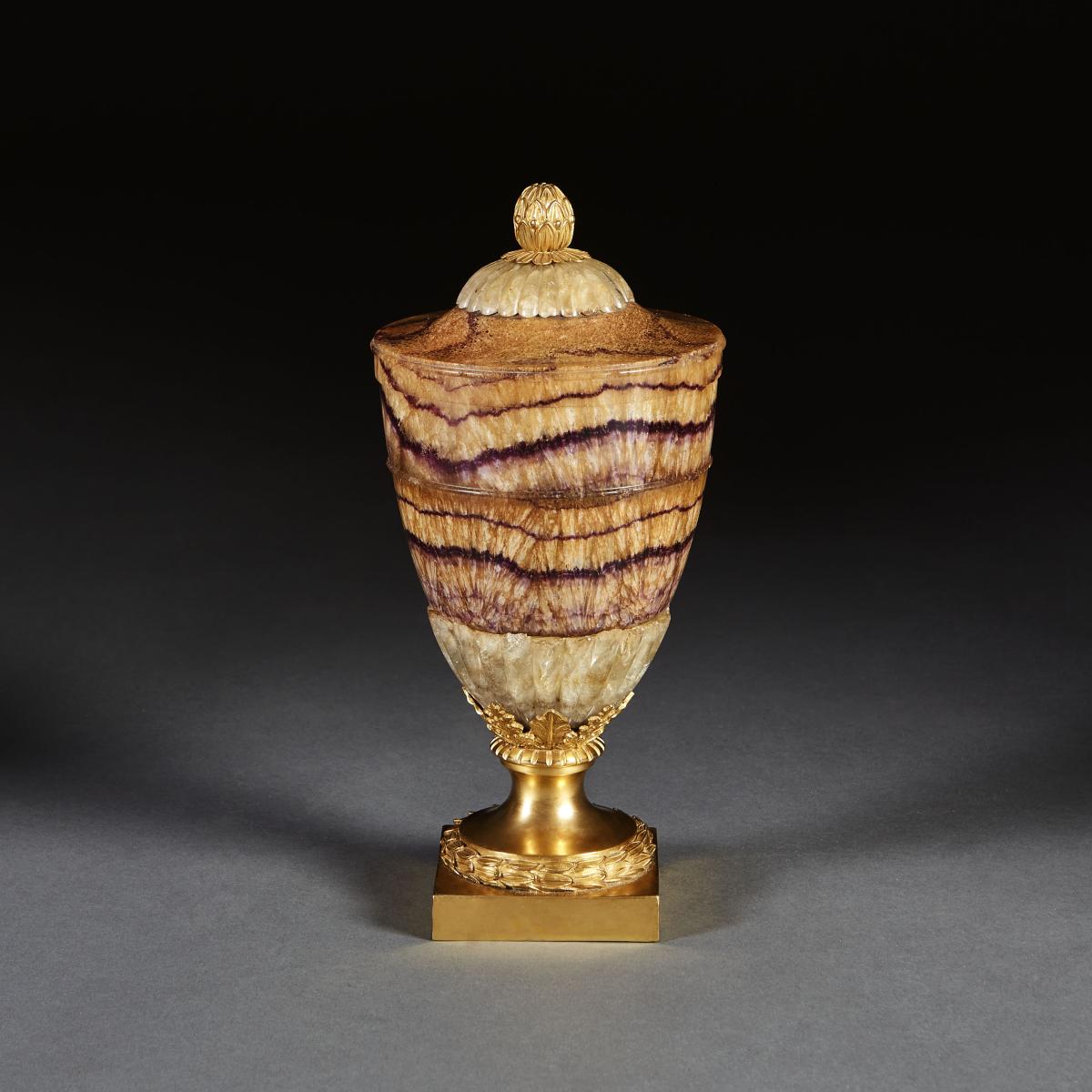
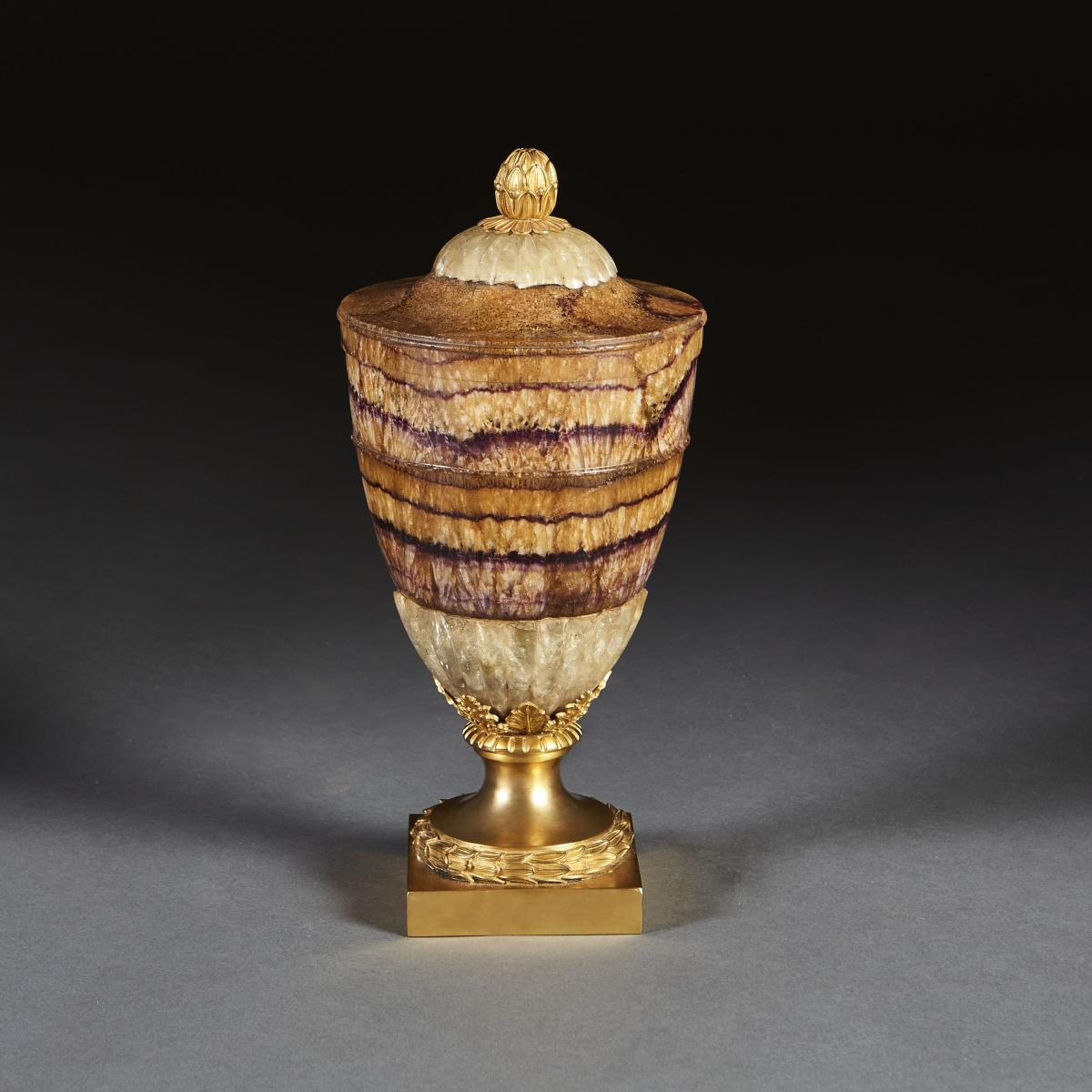
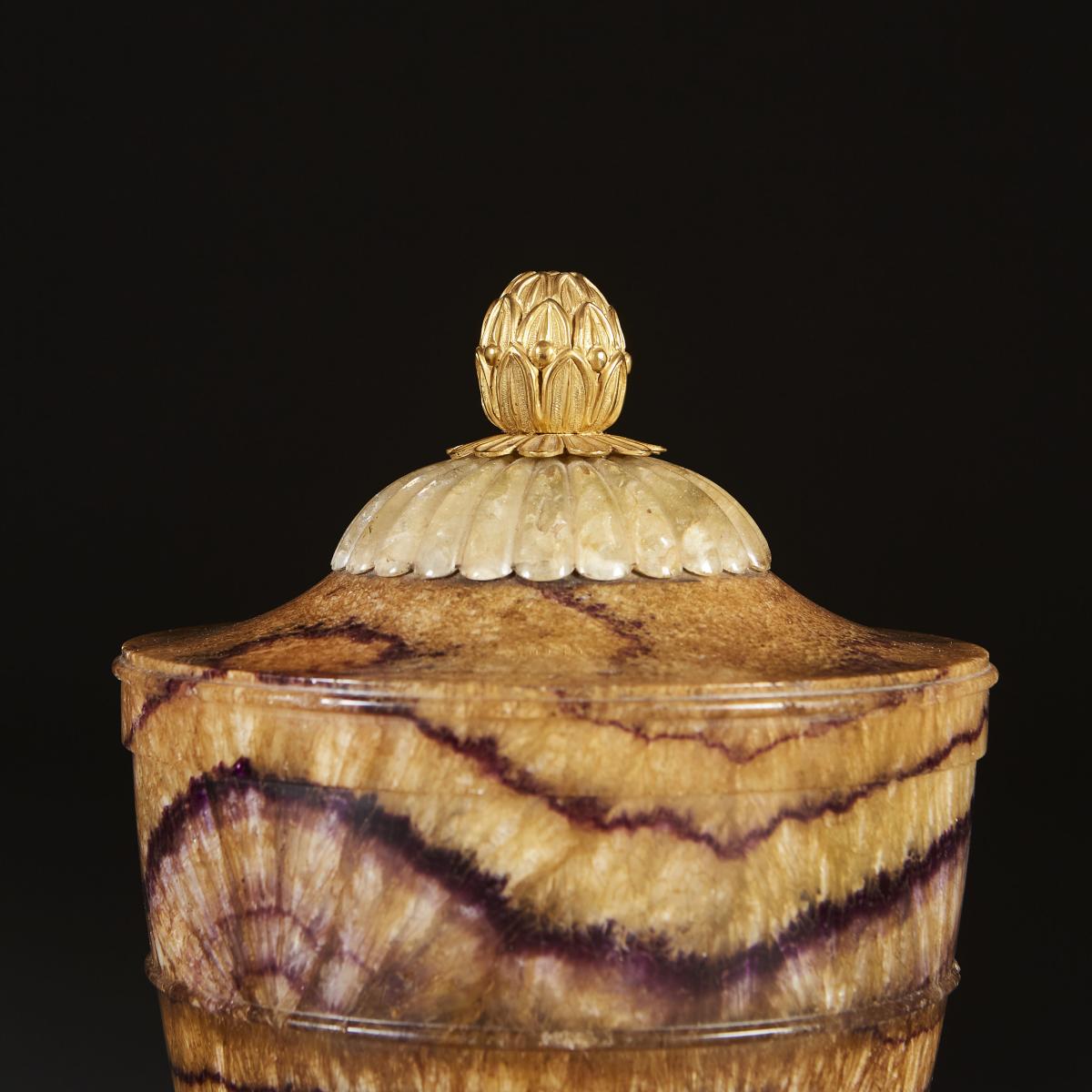
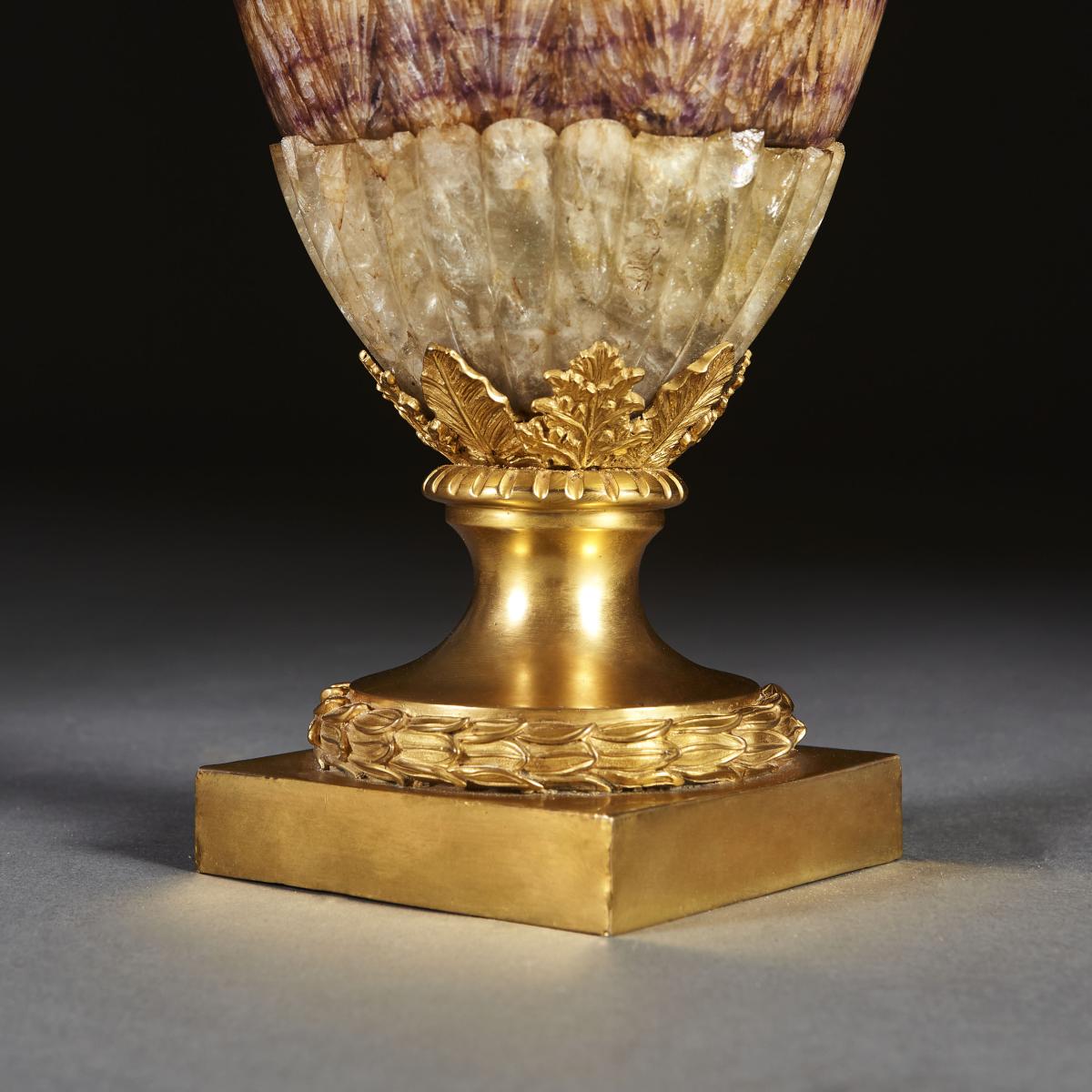
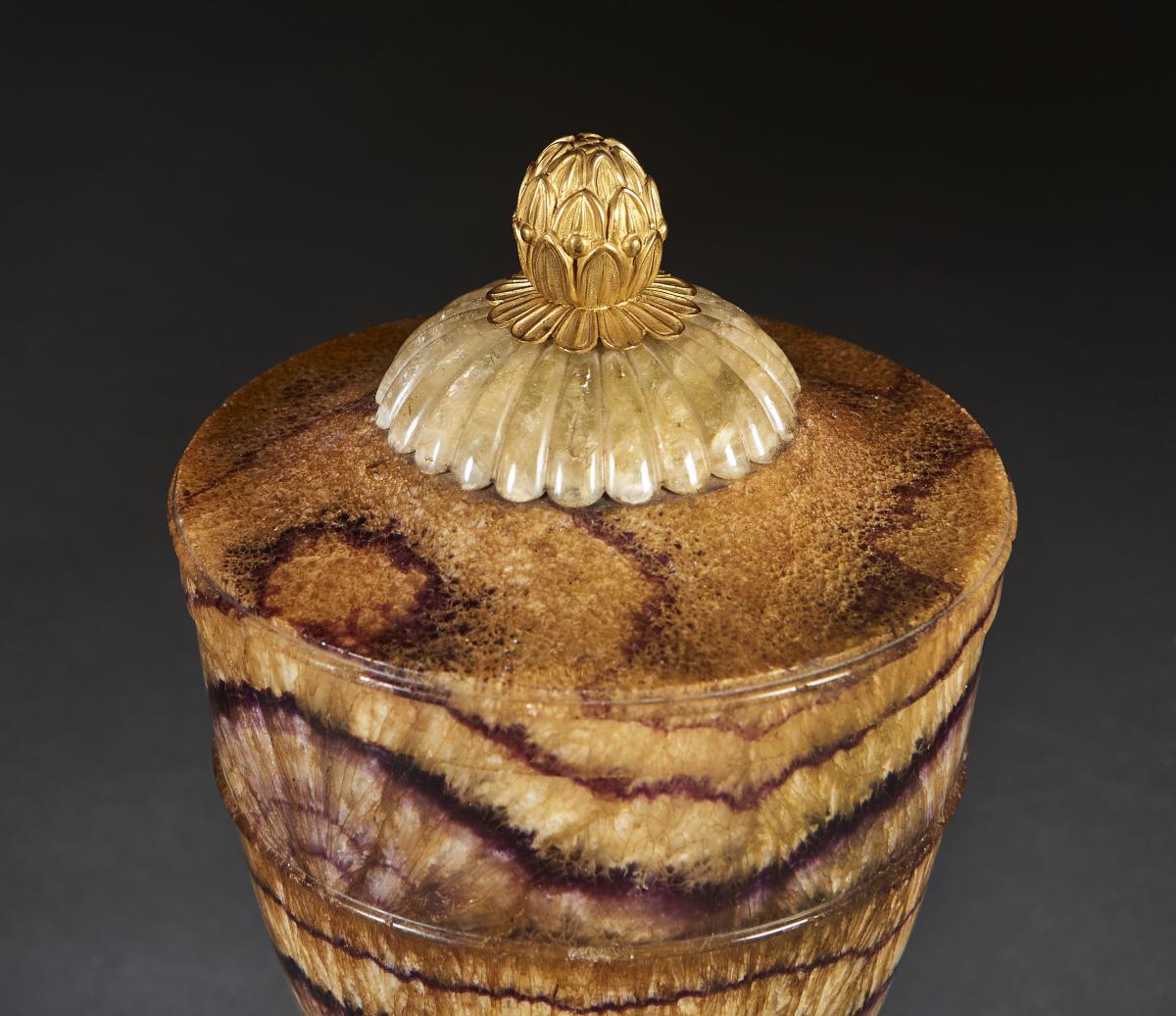
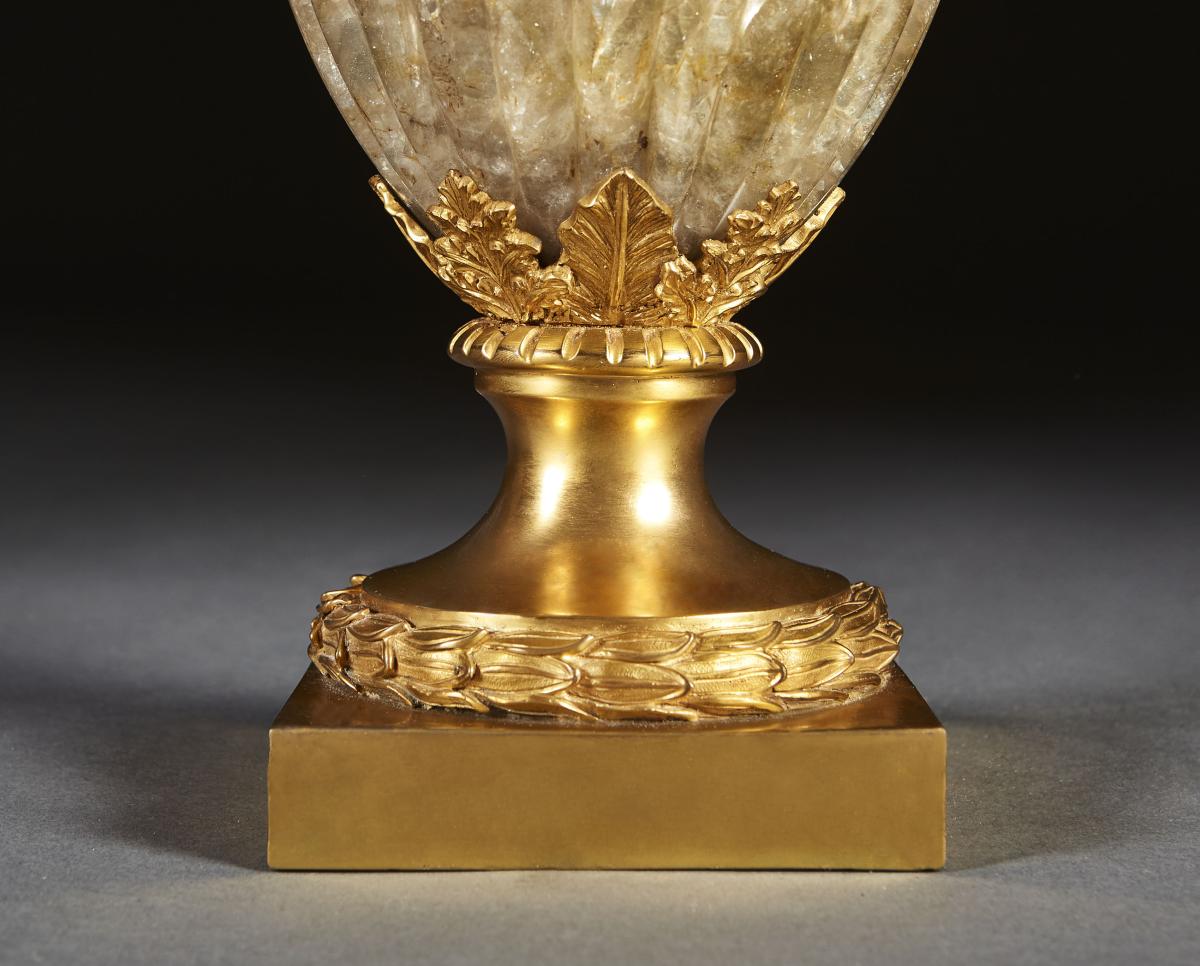
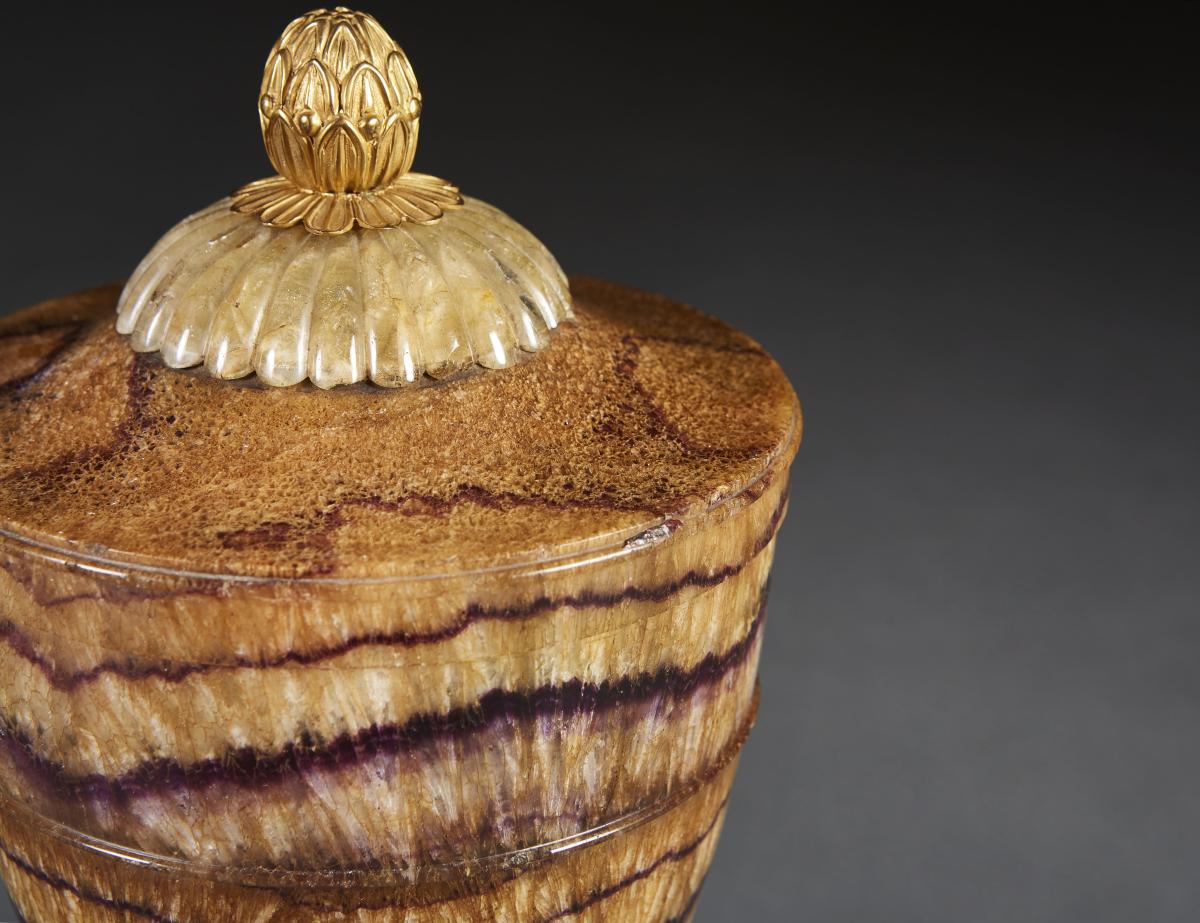
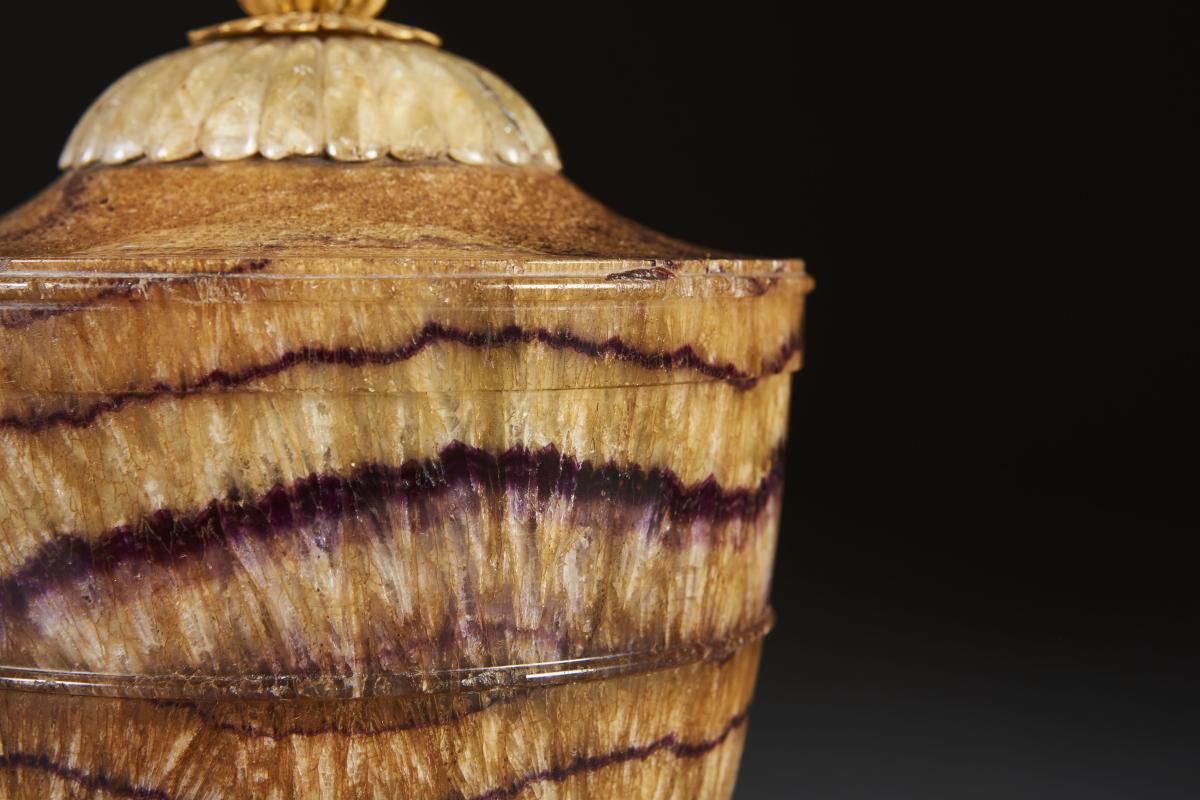
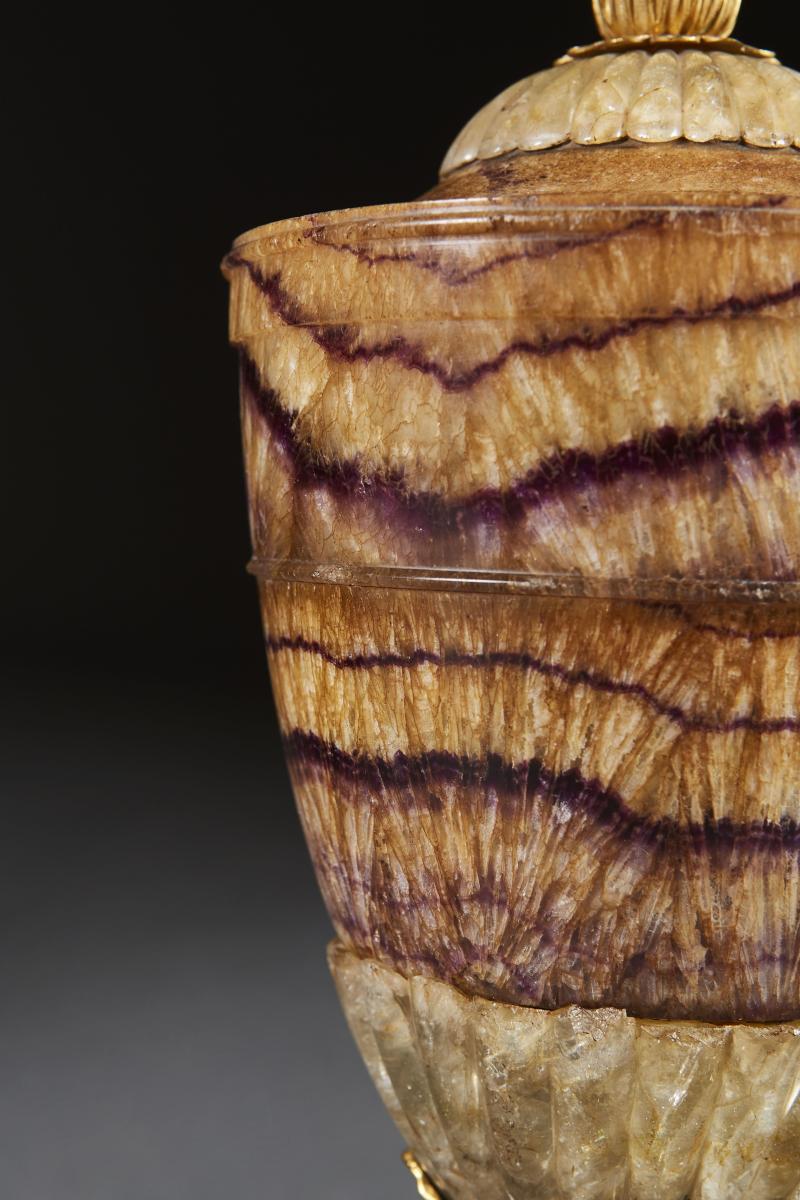
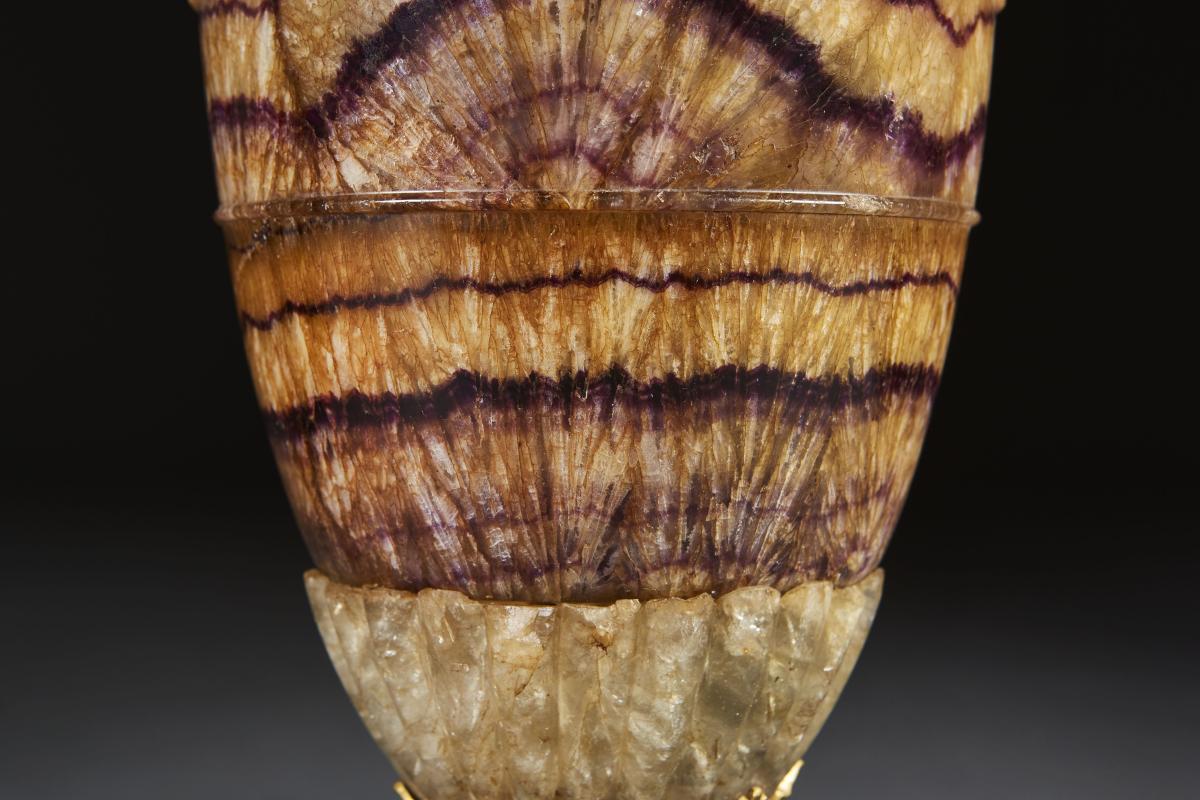
This object is eligible for a Certificate of BADA Provenance
The BADA Standard
- Since 1918, BADA has been the leading association for the antiques and fine art trade
- Members are elected for their knowledge, integrity and quality of stock
- Our clients are protected by BADA’s code of conduct
- Our dealers’ membership is reviewed and renewed annually
- Bada.org is a non-profit site: clients deal directly with members and they pay no hidden fees
Important 18th Century Blue John Urn.
England, circa 1750.
An important mid eighteenth century Blue John urn, mounted with fine French ormolu mounts, the body carved from solid Blue John stone in the form of a classical urn, the ormolu square soccle base with acanthus leaves supporting the fluted lower body of the urn, which is mirrored by the scalloped Blue John mount to the top, in turn surmounted by a finely chased ormolu finial.
Discovered by the Romans over 2,000 years ago, Blue John stone is found only among the caverns of Treak Cliff Hill near Castleton in Derbyshire, England. Celebrated for its unique bands of blues, purples, and violets, Blue John was in great demand during the 18th and early 19th centuries. The colourful and decorative stone was even worked into columns in some of the finest houses in Great Britain, most notably Chatsworth, home of the Duchess of Devonshire. The name ‘Blue John’ is thought to originate from the French term bleu et jaune, meaning blue and yellow. The largest veins of Blue John had disappeared by the early 19th century and today only two working Blue John Stone mines remain, producing only a miniscule amount of the precious stone. The small amount that remains is buried in the veins of limestone which reside deep within Treak Cliff Cavern and Blue John Cavern. Only 0.25 tons of the stone is extracted annually, and is sparingly reserved for small objects and jewellery.
Height 36.00cm
Width 11.00cm
Depth 11.00cm
Diameter of top 16.00cm
The BADA Standard
- Since 1918, BADA has been the leading association for the antiques and fine art trade
- Members are elected for their knowledge, integrity and quality of stock
- Our clients are protected by BADA’s code of conduct
- Our dealers’ membership is reviewed and renewed annually
- Bada.org is a non-profit site: clients deal directly with members and they pay no hidden fees


